

PowerGuru - Power Electronics Information Portal. Lars Schumann - Make - Electronics - Resistor Values. Lars Schumann - Make - Electronics - Connectors and Pin Layout. There thousands of cool and interesting plugs and connectors.
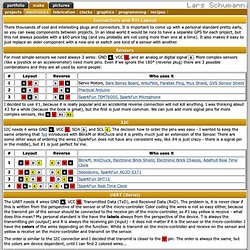
It is important to come up with a personal standard pretty early, so you can swap components between projects. In an ideal world it would be nice to have a separate GPS for each project, but this not always possible with a $60 price tag (and you probably are not using more than one at a time). It also makes it easy to just replace an older component with a new one or switch one kind of a sensor with another. Sensors For most simple sensors we need always 3 wires: GND G, VCC V, and an analog or digital signal S.
I decided to use #1, because it is really popular and an accidental reverse connection will not kill anything. RC Low-pass Filter Design tool - Result - Debouncing Contacts Part 2. This page shows how to design circuits to debound switches and contacts.
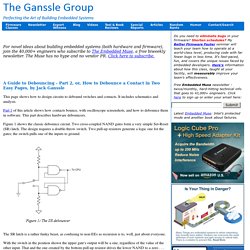
It includes schematics and analysis. Part 1 of this article shows how contacts bounce, with oscilloscope screenshots, and how to debounce them in software. This part describes hardware debouncers. Figure 1 shows the classic debounce circuit. Welcome To Roninsynth.com. Quick Start: Get started making sounds quickly with your Ronin by using the Ronin GUI.
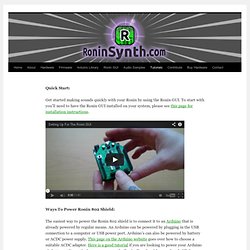
Teach Analog Circuits With NI Multisim and NI ELVIS. This tutorial shows you how to use the NI circuits teaching solution, which features NI Multisim and NI ELVIS to teach students about active analog filters.
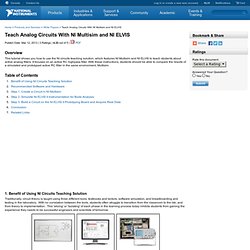
It focuses on an active RC highpass filter. With these instructions, students should be able to compare the results of a simulated and prototyped active RC filter in the same environment, Multisim. 1. Benefit of Using NI Circuits Teaching Solution Traditionally, circuit theory is taught using three different tools: textbooks and lecture, software simulation, and breadboarding and testing in the laboratory. The NI circuits teaching solution is the complete platform of software, hardware, and courseware for educators to build student expertise through practical hands-on experimentation with electrical circuits. Volume IV (Digital) - Table of Contents. Chapter 3: PIC16F887 Microcontroller - Book: PIC Microcontrollers - Programming in C. Chapter 3: PIC16F887 Microcontroller The PIC16F887 is a well known product by Microchip.
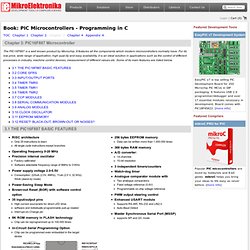
It features all the components which modern microcontrollers normally have. For its low price, wide range of application, high qual-ity and easy availability, it is an ideal solution in applications such as the control of different processes in industry, machine control devices, measurement of different values etc. Some of its main features are listed below. Nigel's PIC Tutorial Hardware. Nigel's PIC Tutorial Hardware Extras. I've added this page to give a few extra simple interfacing examples, the PIC itself inputs and outputs logic level signals, for the purposes of these tutorials we can consider a 'high' output to be 5V, and a low output to be 0V.
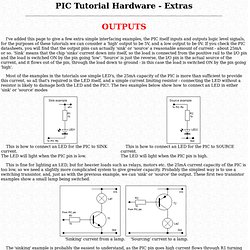
If you check the PIC datasheets, you will find that the output pins can actually 'sink' or 'source' a reasonable amount of current - about 25mA or so. 'Sink' means that the chip 'sinks' current down into itself, so the load is connected from the positive rail to the I/O pin and the load is switched ON by the pin going 'low'. 'Source' is just the reverse, the I/O pin is the actual source of the current, and it flows out of the pin, through the load down to ground - in this case the load is switched ON by the pin going 'high'. This is fine for lighting an LED, but for heavier loads such as relays, motors etc. the 25mA current capacity of the PIC is too low, so we need a slightly more complicated system to give greater capacity. i2c 8 channel IO board with relays. With all these MCU’s needing to connect to real world stuff.. electric valves, heaters, motors and the like.
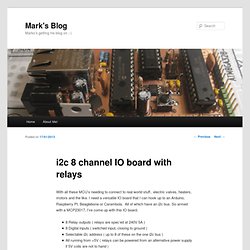
I need a versatile IO board that I can hook up to an Arduino, Raspberry PI, Beaglebone or Carambola. Arduino. Voltage. An electric current won't flow through a circuitA collection of wires and electric components connected together in such a way that electric current can flow through them. unless there's a source of energy like a batteryA battery is two or more electric cells joined together that can produce an electric current when connected to an electric circuit. or mains electricity to push the electric charges along through the wire. 'Voltage'A measure of the energy of the electric charges in a circuit. is a measure of how much energy the electric charges have between two points in a circuit.
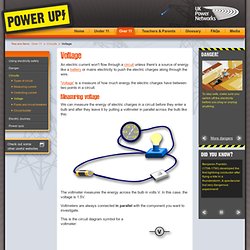
We can measure the energy of electric charges in a circuit before they enter a bulb and after they leave it by putting a voltmeter in parallel across the bulb like this: The voltmeter measures the energy across the bulb in volts V. In this case, the voltage is 1.5V. Electronic Circuits. 10 Ways to Destroy an Arduino : Application Note ANCP01. » 2012 » November JeeLabs. One.

Ok, next post :) I was curious about the difference between Power-down and Standby in the ATmega328p. Power-down turns off the main clock (a 16 MHz resonator in the case of JeeNodes), whereas standy keeps it on. And quite surprised by the outcome… read on.
Liquidware : Electronics. Tutorials. New!
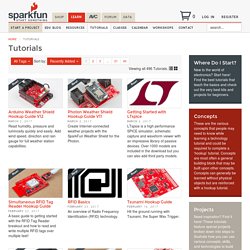
Getting Started with LTspice LTspice is a high performance SPICE simulator, schematic capture and waveform viewer with an impressive library of passive devices. Over 1000 models are included in the download but you can also add third party models. RFID Basics. ABC - Arduino Basic Connections. Experimenting with bridge rectifers for AC to DC power conversion. The folks over at Toymaker Television have put together another episode. Computer-hardware-poster-972.jpg (JPEG Image, 972 × 1377 pixels) - Scaled (45. How to Build an AVR Development Board. Connecting Batteries in Series or Parallel. We frequently get asked the question, "How am I supposed to connect my battery if I want to double the capacity but not the voltage? ", or similar questions.